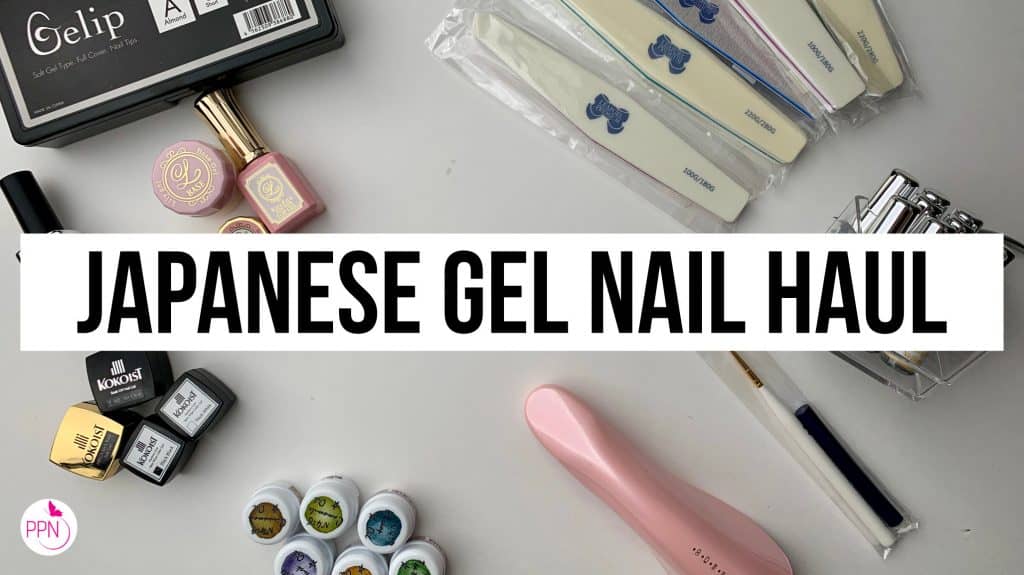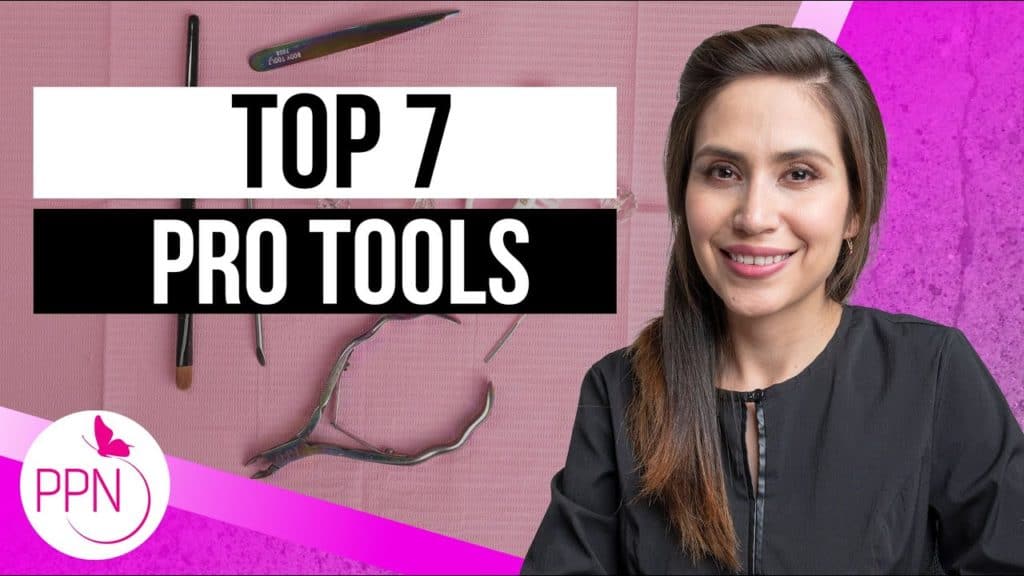Part of being a successful nail technician is your clients’ nails lasting for the appropriate time, depending on what coating you’ve applied.
So you’ve sent your client on their way after their appointment. Everything went smoothly, so it was to your surprise that they DM you a few days later with pictures of their nails lifting.
Heartbreaking. I know. Trust me. Been there, done that.
Today, we’ll go through a troubleshooting list to identify what went wrong.
Let’s first identify three not-so-obvious culprits hindering those gel nails from lasting 3+ weeks before looking into problems you may be making with your nail prep or application.
Not-So-Obvious Culprit #1 Working with an old unit.
If you are a nail technician who works full time, it may be that your lamp needs replacing.
Over time, light intensity fades, which can affect the curing of gel products. When these are not fully cured, they are prone to lifting and chipping.
Not-So-Obvious Culprit #2 Natural nail health.
The nail health of the client is essential to gels lasting on the nail plate. If it is damaged/peeling/very thin, it cannot hold onto the product the same way and must be grown out before attempting to reapply again.
The same applies when a client may be on medication that affects adhesion on the nail plate.
Even those with naturally wet and/or oily nails have a tough time keeping gels on without aggressive etching of the nail plate and primer, which is something that Japanese gels do not need to achieve 3+ weeks of wear.
And please remember. It is okay if a client is no longer ideal for your chosen products. You do not have to go out and invest in a whole ‘nother system of nails if you don’t want to or if it’s simply not in your budget as a business owner to do so.
Troubleshoot the problem as much as possible; otherwise, let the customer find the tech that can provide the kind of coating needed to stick, and you will find a client that is perfect for the gentle but strong adhesion Japanese gels were designed to do.
As an independent nail tech, it is all about loving what you do and getting to do that with the right products, services, and clientele.
We go deeply into this mindset shift in my free masterclass. Go HERE to learn so much more!
Not-So-Obvious Culprit #3 External factors
Other factors that play into gel adhesion are the products the client uses daily.
Hand sanitizers and lotions containing lanolin (wool fat) can interfere with gel adhesion even if you have prepared the natural nail plate perfectly. This, along with the careless use of hands, can create product breakdown.
For example, washing the dishes without gloves, using harsh cleaning chemicals, or gardening without protective gloves. Using a sauna and/or having long soaks in a hot bath soon after a nail appointment can also lead to issues.
We must educate our clients on the correct aftercare so they can enjoy their manicures between appointments. If you have a repeat offender, professionally admonish your client at their appointment if necessary, some people just need that little nudge to initiate that intentional awareness in them. Assert them, and let them know you are on their side to make their nail goals a reality.
If your prep is immaculate and you don’t have any other, or very few clients, who had their nails lifted, we must consider that outside factors contributed.
So What To Do When Clients’ Nails Lift… be concerned, and try and identify the culprit.
So let’s say you’re new at this…
You’re allowed to make mistakes! We don’t come out of the gate perfect. We all learn at our own pace. That is totally okay, and you can use this opportunity to fine-tune your techniques and eliminate what causes the lifting. However, try to also remember that other factors in the clients’ life may also be contributing, so lifting the enhancement is not 100% your burden.
The best way to do this is to break down each step of your prep and seek specialized training in the areas you wish to improve on.
If you are looking for specific step-by-step education using specifically Japanese Gel, in the free masterclass I mentioned earlier, you will also receive a debrief of my paid program, Master Gel Nails. So don’t forget to watch this video when you’re done with this reading. Using the link HERE.
Let’s talk about essentials for best adhesion:
#1 The correct grit sponge buffer
One of the essentials to prep is using the correct buffer on the natural nail plate to avoid damage but still remove shine.
When you are DIYing, I recommend working with a low grit sponge buffer of around 200grit so that when you do your soak-off removal, your gel nails soak off quickly.
If you are a little more confident or advanced, you can increase the grit of the buffer you are using to a 180-grit buffer. You will definitely improve adhesion by doing so, but also keep this in mind if you are having a stubborn soak-off. If you are more advanced, I would recommend efile removal technique instead.
Essential #2 The Correct Prep Liquid.
Prepping essentials depends on what type of nail products you are using. Most will require a pH Balancer, also known as a dehydrator, and others will require a primer or bonder. Bonder is a type of primer and can be acid or non-acid; most are non-acid, especially when working with gel nails.
For our niche of soft potted gel and Japanese Gel, we need either! Simply 90% alcohol.
Essential #3 Product Control.
The gel that floods the cuticle area and is cured will always lead to lifting. Yes, always. The oil in your skin will return and repel the product, leading to lifting.
The gel is meant to be applied on the dry, matte hard surface of the keratin in your nails, not your skin.
If you focus on these three essentials: the correct grit buffer, prep liquid, and your product control, and then you couple these essentials with the not-so-obvious culprits we talked about earlier… you would have diminished your lifting possibilities by 100%; you would just now have to investigate your client.
Let’s get into that now… customer service.
To be the best service provider in a “lifting” situation, imagine yourself in the same situation because you will then figure out exactly how you would like the situation handled.
With that being said… do not apologize right away. Doing so shifts all the blame onto you and could make you appear incompetent at your job.
Instead, thank the client first for bringing this to your attention, and emphasize how grateful you are to have the opportunity to remedy the situation. This will show your client that you are willing to work towards a resolution. This is your profession, and you represent your brand/salon/studio.
This approach will usually catch the client off guard, not expecting this response, so they aren’t in that upset mindset immediately. Redirecting your client to a rectifying frame of mind, rather than blaming, will keep you in control of the situation.
[This attitude demands respect without ever being brash. Yes, you offer a service, but you are not a servant.]
And remember, you are in a service-based business. A client cannot return to you the time and products you used on them, so you are not obligated to refund their demand. Of course, you can do this at your discretion, especially if you want to just eliminate someone abhorrent. Still, it is usually unnecessary, and most people are happy with their nails being redone or removed at no extra cost.
In conclusion, you must tackle nail lifting with a willingness to learn better techniques, use better products, or figure out what the client is doing as part of their lifestyle that could have caused this. However, let it comfort you that lifting rarely lands on your desk once you can polish your prep to absolute military precision.
Thank you for reading, and I’ll see you next week. Bye for now!

Content by Paola Ponce and Marta Kida Markowska
These blogs are copyrighted material, and any use of this blog is not permitted without written concern first. Some of these blogs contain affiliate links that give us a small commission when qualifying purchases are made. Thank you for your support that helps us to continue creating valuable resources and content like this.


